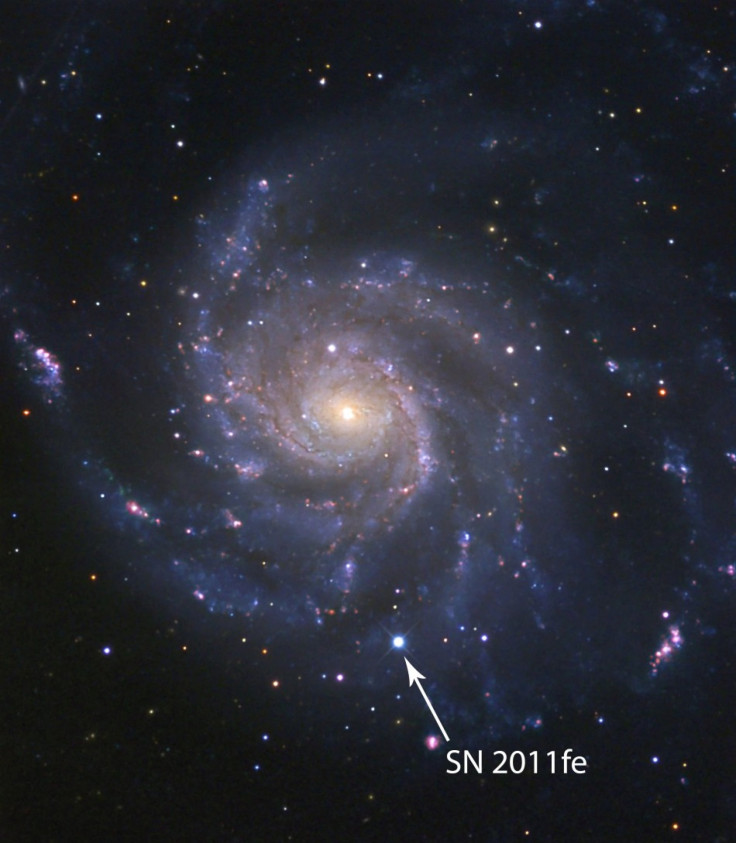Stellar Explosion Gives Researchers Supernova Rosetta Stone

Astronomers announced Wednesday a stellar explosion not seen in a generation - a rare discovery of a supernova in formation.
The supernova dubbed SN2011fe -- the brightest and closest one to Earth seen in the past 25 years - gave researchers a glimpse into what causes these intense explosions and how the universe expands.
Sky-gazers witnessed the explosion a mere 11 hours after occurring, what some researchers are calling the Rosetta Stone of supernova, a reference to the monolith that gave an understanding of Egyptian hieroglyphics.
Never before have we seen a stellar thermonuclear explosion so soon after it happened, said Lars Bildsten, professor of theoretical astrophysics at the Kavli Institute for Theoretical Physics at University of California Santa Barbara, and study author. Two studies on the supernova appeared online Wednesday in the journal Nature.
The proximity and freshness of the explosion gave astronomers the chance to witness the supernova close up.
What caused these explosions has divided the astronomical community deeply, said Shri Kulkarni, principal investigator on the explosion-monitoring project called the Palomar Transient Factory and astronomy professor at Caltech.
This discovery is exciting because the supernova's infancy and proximity allows us to directly see what the progenitor system is,said Mansi Kasliwal, astronomer at the Carnegie Institution for Science and study coauthor. We have expected for a while that a Type Ia supernova involves a carbon-oxygen white dwarf, but now we have direct evidence.
White dwarf stars are essentially dead - deplete of energy, they eventually cool down to the temperature of the cosmos. However, some dead stars explode - type 1a supernova - when they merge with another star.
The supernova - detected and initially classified within hours -- displayed how quickly astronomers are able to detect and analyze data.
The rapid discovery and classification of SN2011fe -- all on the same night -- is a testament to the great teamwork between all the researchers from over a half a dozen institutions, Kulkarni says.
The future looks very bright. Soon we should be finding supernovae at an even younger age and thereby better understand how these explosions happen.
© Copyright IBTimes 2024. All rights reserved.





















